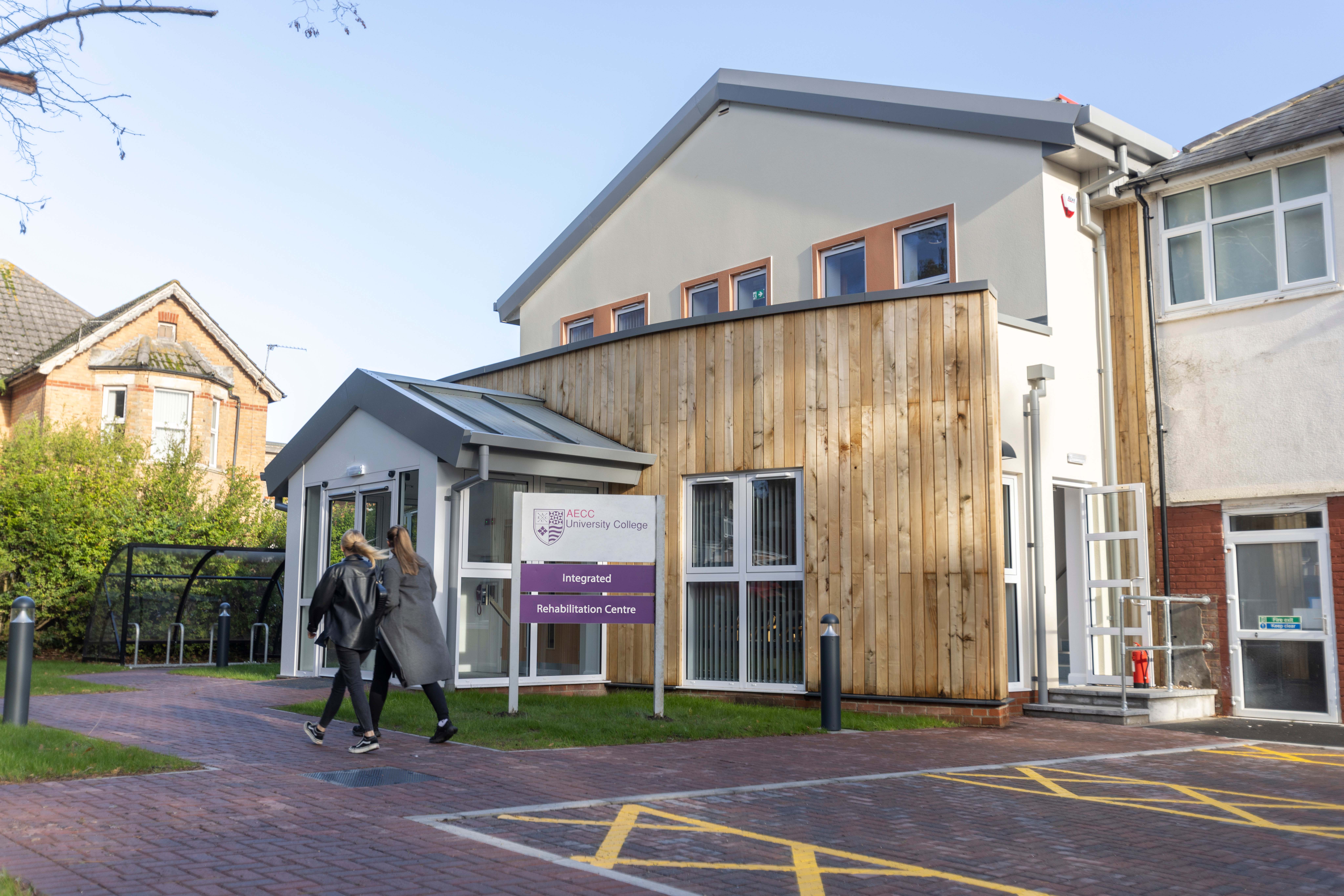Patient Story: Megan Sadler

Two years ago, Megan Sadler was diagnosed with Functional Neurological Disorder (FND). Functional Neurological Disorder (FND) describes neurological symptoms like limb weakness, tremor, numbness or blackouts, related to the movement and sensation parts of the nervous system.
One of the symptoms that Megan experiences is seizures that sometimes cause her temporary paralysis in her legs. In August 2022, she had a seizure that caused longer term paralysis in her legs. In March this year, Megan started seeing Clinical Lead for Community, Long-term conditions and Neurology at AECC University College, Katie Bright. She worked with Katie between March and June this year. She tells us more about the experience:
Two years ago, Megan Sadler was diagnosed with Functional Neurological Disorder (FND).
Functional Neurological Disorder (FND) describes neurological symptoms like limb weakness, tremor, numbness or blackouts, related to the movement and sensation parts of the nervous system.
One of the symptoms that Megan experiences is seizures that sometimes cause her temporary paralysis in her legs. In August 2022, she had a seizure that caused longer term paralysis in her legs.
In March this year, Megan started seeing Clinical Lead for Community, Long-term conditions and Neurology at AECC University College, Katie Bright. She worked with Katie between March and June this year.
She tells us more about the experience:
Working with Katie
“Before I met Katie, I didn’t know what I should be doing to get better. I had a feeling of dread like I would be in the wheelchair forever.
“The paralysis after my seizures would usually only last for a day, or a week at most, but this time it was month after month and nothing seemed to change. I didn’t know how to get up and going again.
“I wanted to be out of the wheelchair so badly. The experience has given me a new perspective on life. Everything was so much more difficult and there was so much to think about when I tried to get out and do normal things.
“I had been waiting about six months for some Neurological Physiotherapy on the NHS, but the waiting list was very long. My partner’s mum did some phoning around and found Katie.
“Katie was excellent; she was really supportive and she knew a lot about FND. I’ve found that to be quite unusual in health care; I find doctors generally don’t know much about the condition.
“I have non-epileptic seizures and in the early days, my partner would take me to A&E and I would just be sent back home because they didn’t know what was wrong.
“It was amazing that Katie knew all about my condition. She had worked with other people in a similar position to me and she knew how to approach my treatment. She explained things to me really well.”
Identifying Goals
“In our first session, Katie asked me about my goals and what I wanted to achieve in the short and longer term. My partner and I were going on holiday to Spain in June and my main goal was to be out of my wheelchair for that. I wanted to be able to walk around and to go swimming.
“In the second half of the session, Katie went through some exercises with me to help me start standing. This included leaning against a table or a bed frame so I could practice standing up. I hadn’t stood up at all since August 2022 so I found it quite difficult.
“At the end of April, we started working with the parallel bars and I started taking my first proper steps to get back into walking again.”
Learning Management Techniques
“Katie advised me that it would help if I was distracted while I practiced standing. She gave me a colouring book to do while I was doing my exercises, because I had mentioned to her that I liked art. She encouraged me to give it a go and I saw a dramatic improvement.
“I could stand for longer because I wasn’t constantly thinking about it. When I thought too much about trying to stand, my legs would start shaking. The distraction really helped. I’m still using the techniques that Katie gave me in those sessions.”
Achieving Goals
“My last session with Katie was at the beginning of June. My partner and I really enjoyed our holiday. I brought my wheelchair with me, but for the most part I could walk around and swim. I was so pleased about that.
“Katie took videos and photos of my progress so that I could share these with my family. If I was ever having a hard time, or I thought I was going backwards, I could look at the videos and remind myself how far I had come. That’s what she told me to do and it really helped. It was very motivating.
“My family live in Lincolnshire, while I live in Poole, so it was great to show them my progress this way. The first time I got up out of my wheelchair and took some steps, my mum was so happy she cried.”
Confidence for the Future.
“Working with Katie makes me feel more confident that if this happens to me again, I have strategies that will help me cope with it. It was really scary when it first happened but it’s less on my mind now and I can focus on other things.
“I’d really like to get back to work now that my FND is starting to be more under my control. I’ve started volunteering one day a week at a charity shop to help get myself back into a work environment.
“To anyone in the position I was in, I would say: don’t lose hope. I had been feeling like this would be my life forever, but once I started doing the Physiotherapy, it gave me hope.”

